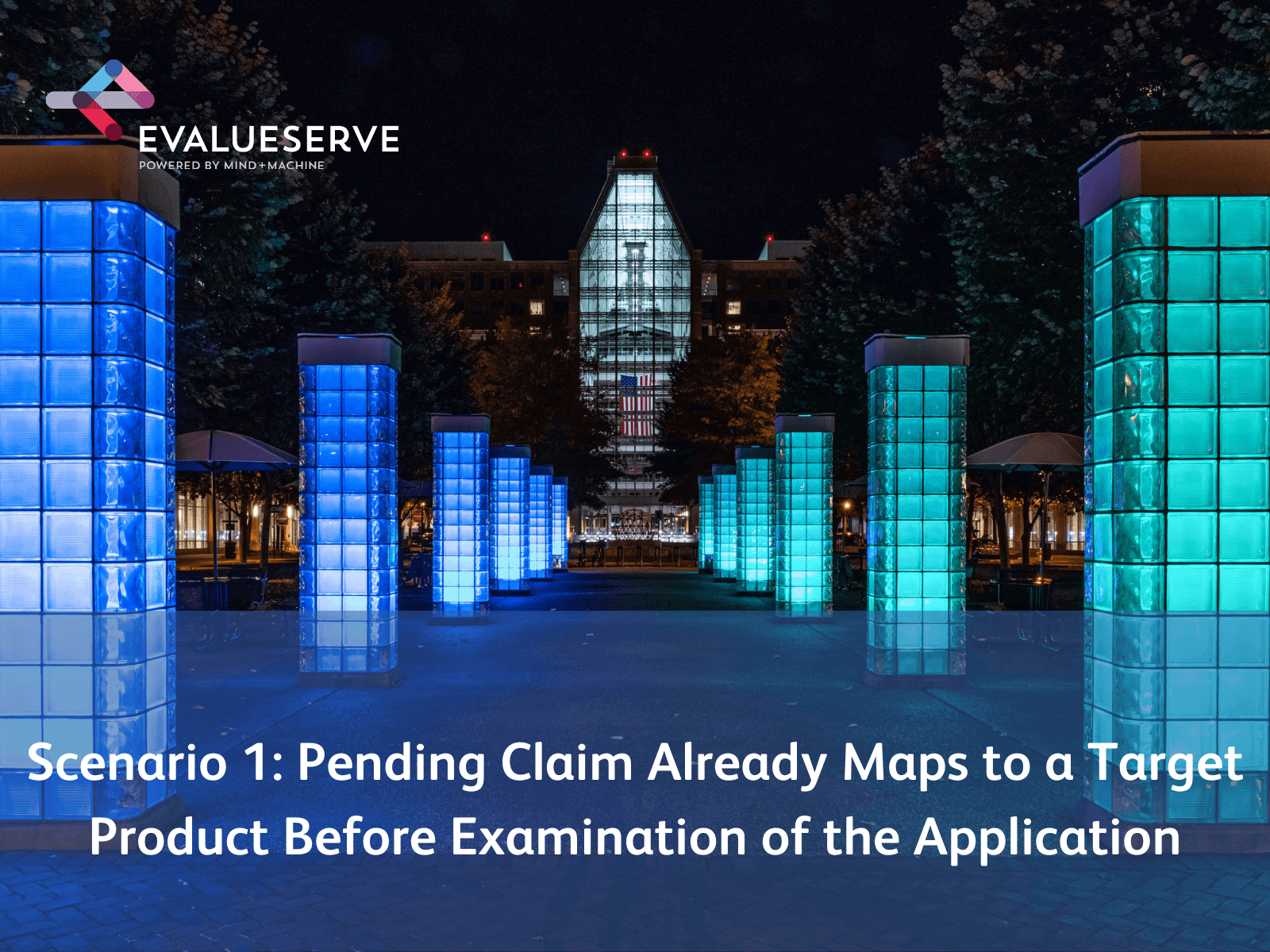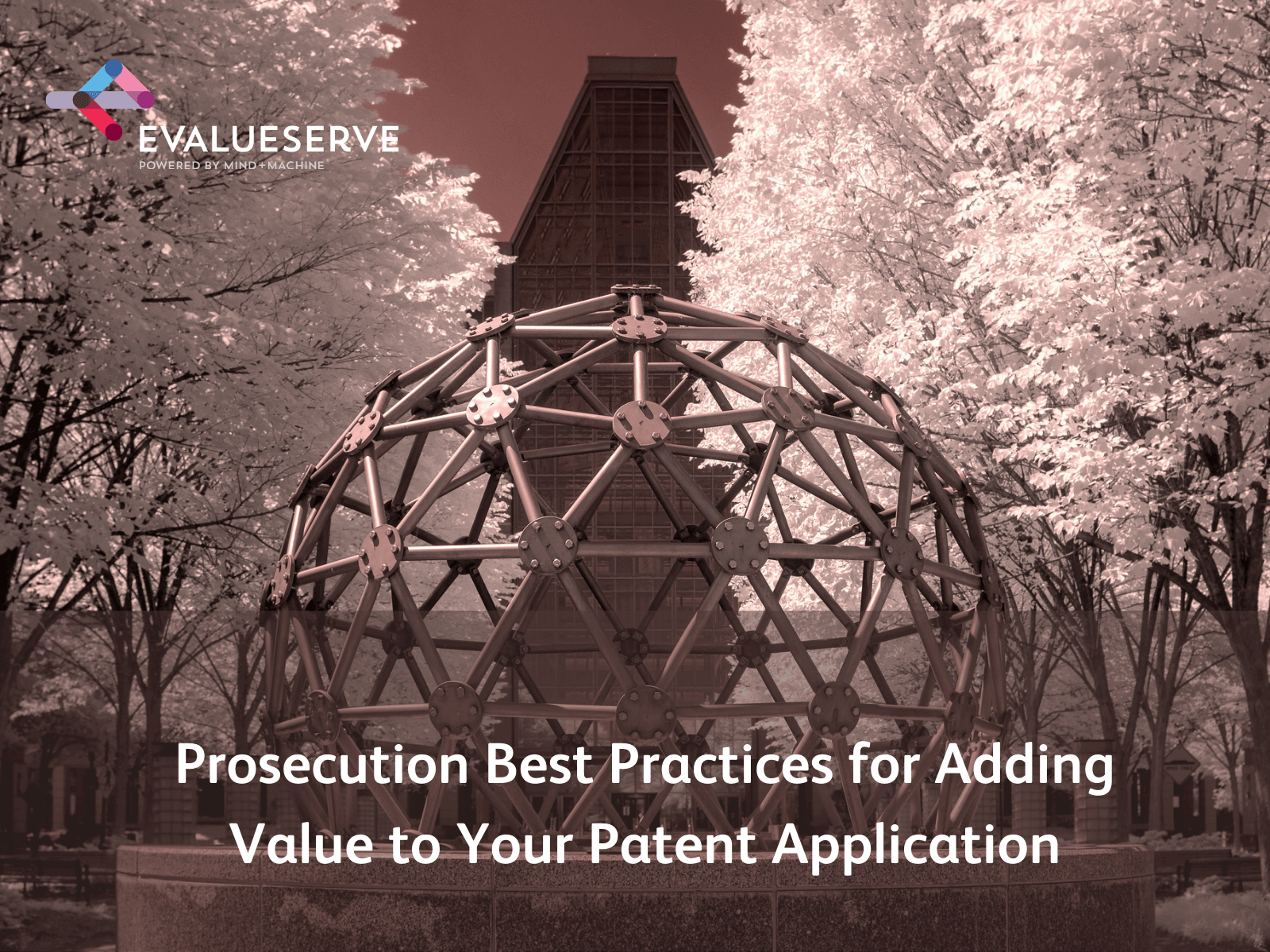by Gursimran Kaur and Pruthvi Nagaraj
Directed prosecution is a process to address the potential scope of claims against target products. It allows your innovation team to file a patent application with a ready report to negotiate a license with any third-party products similar in subject matter to your invention.
During the examination process for a patent application, your search team may find similar third-party products. This may generate a report that maps the key features of the third-party product(s) vis-a-vis the claims of your application for your negotiations with the patent examiner. The granted patent carries licensing potential with the third party who may sell a product similar to your invention.
Each patent application should have a potential return on investment. Adopting the process of directed prosecution ensures ROI for your existing portfolio and increases the monetizing potential of your patent applications.
Scenario 1: Pending Claim Already Maps to a Target Product Before Examination of the Application

Directed prosecution is not always as simple as it sounds. Every practitioner working on directed prosecution faces this dilemma — How do I overcome the prior rejection by amending claims while maintaining a broad enough scope on the target product? The answer usually lies in claim interpretation.
Role of Claim Interpretation
Broadest Reasonable Interpretation (BRI) is a concept used by US patent examiners. A patent examiner interprets the claim language in the broadest reasonable manner possible to make a rejection. The resulting granted claim ensures that any potential claims are not interpreted even more broadly during litigation. This minimizes the risk of invalidating the granted patent.
Let us look at an example of interpretation. A claim recites the phrase “restoring hair growth.” From the patent practitioner’s point of view, that could mean growing a full head of hair, while from the examiner’s perspective, it could mean any hair growth increase.
In the words of Arthur Conan Doyle: “[w]hen once your point of view is changed, the very thing which was so [frustrating] becomes a clue to the truth.” A clue indeed. Look at your claim from the examiner’s point of view and understand how they interpret your claim to reject it due to prior art.
Often, practitioners are frustrated when their claims are rejected, feeling that it should be obvious to the examiner how the claim is different from prior works. Practitioners may file a strong reply to a rejection, hoping that the examiner will allow the claim, but ultimately receive a second rejection with the same prior work. This makes it clear the examiner wants you to change your point of view.
When you do, use the examiner’s clues to incrementally amend the claim with clarification changes. In many cases, this will overcome the rejection. The changes can be so incremental that the claim still reads on the target product from your point of view. There are different ways to grasp the examiner’s point of view. You can glean it from the examiner’s reply to arguments or by speaking with the examiner.
While amending the claim, the practitioner must be cautious about not giving up “equivalents” for any claim element. They could result in a narrower interpretation of the claim element because of case law (Festo Corp. v Shoketsu Kinzoku Kogyo Kabushiki Co., 535 U.S. 722 (2002)). When clarification amendments are unsuccessful, you can fall back on other features listed in the report, which are not disclosed explicitly by the examiner’s cited prior art.
Case Studies for Scenario 1
Let us look at a couple of case studies to see how claim interpretation plays a role in maintaining the scope of claims almost intact and directed to the target product:
Case Study 1
First Non-Final: Original claim was directed to a target product. The claim recited automatically applying a setting based on a selection. Cited prior work merely disclosed a device that guides a user to apply a setting before capturing an image. The claim was amended to clarify that the setting is automatically applied to an already captured image.
First Final: The examiner insisted that prior work discloses the amended feature since the image may be captured based on the user-applied setting. The claim feature was then rewritten to clarify that the captured image is displayed with the applied setting based on the selection. The examiner agreed, and the modified claim was allowed with a scope that still reads to the target product.
Case Study 2
First Non-Final: The original claim was directed to a target product. The claim recited a feature of executing a process for generating information in which an image anomaly can be checked by a user. The combination of prior work references respectively disclosed (i) the anomaly in the image and (ii) the executed process. However, while prior work references corrected the anomaly, none of them disclosed generating information to be checked by the user.
The amended claim clarified that the generated information does not correct the anomaly but points it out. An examiner interview clarified this fact, and the examiner allowed the application. The final claim scope still reads to the target product.
Scenario 2: Course of Action If You Find a Target Product After Examination Has Already Started

ROI from a patent infringed upon by a big corporate product may sound lucrative. However, in some cases, you may come across the target product after the application is filed and application prosecution has begun. So, what’s next?
1. Streamline or direct the prosecution of the application by rewriting/ amending claims and/or adding features that cover the features of the target product, as well as differ from the prior work(s) cited by the examiner in the Office Action.
The applicant may have already surrendered the right to apply equivalents (doctrine of equivalents) to some of the claimed features via amendments to overcome a rejection during prosecution. These may bar the applicant from asserting the doctrine of equivalents, and the third party may get away without infringement by tweaking the product.
Once the claimed features are amended and the claims have been interpreted in a certain manner to overcome rejection, it creates a prosecution history estoppel (PHE). Prosecution history estoppel is a judicial device in law that precludes the patent applicant from broadening the scope of claims to cover subject matter given up by the amendment. The claims may be interpreted in light of these amendments and arguments during litigation. During litigation, the claim may be interpreted in a manner narrower than it appears owing to PHE. In such a case, the applicant will not be able to prove infringement even if the allowed claim appears to cover the product.
If the prosecution has advanced significantly, this forces you to revert the claim to its previous form in light of the target product. It is only wise to choose this option if there were no significant amendments made to the claims while responding to the prior rejections, and most of the claimed features are present in the target product. In some instances, the examiner may issue a restriction for deviating from the originally presented subject matter.
2. But is rewriting the claims the only course of action? The answer is no.
In scenarios where the prosecution has advanced significantly, filing a continuation is the best possible solution. Directed prosecution increases the value of your existing patent portfolio, and it helps you make decisions for filing continuation applications to generate an extensive portfolio in every technological domain.
The applicant may file a continuation with claim features that are explicitly shown in the target product and are potentially novel over the prior work presented by the examiner during the patent application prosecution. The applicant may cut costs by abandoning the parent application if it has little value after the continuation is filed.
Case Study for Scenario #2
Let us look at a case study for the scenario where examination has already started:
First round of examination: Claims were directed to Embodiment 1 and were amended twice in the first round of prosecution to overcome prior work rejections.
Second final OA: A second final OA is outstanding.
Target product found: At this stage, the client found a target product related to Embodiment 2 of the application and instructed the practitioner to change the claims substantially based on Embodiment 2.
Outcome: Since claims had already undergone one round of prosecution (first non-final and first final) directed to Embodiment 1, the examiner probably would not accept substantial amendments to the claims directed to Embodiment 2 and might issue a restriction requirement and withdraw all claims leading to non-compliant amendments. Instead, filing a continuation application with claims directed to Embodiment 2 was recommended.




